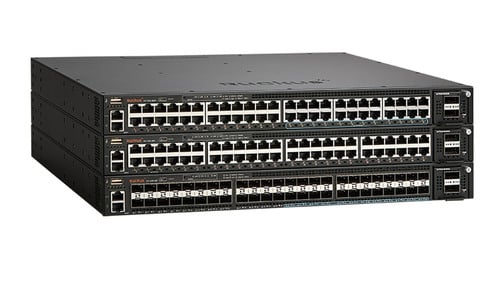In the ever-evolving landscape of networking, the term "next-generation Ethernet" represents a transformative leap toward faster, more efficient, and technologically advanced networking solutions. As organizations strive for enhanced performance and agility, understanding the key attributes and advancements of next-generation Ethernet becomes crucial. This article delves into the defining features, benefits, and potential applications of next-generation Ethernet.
Key Attributes of Next-Generation Ethernet:
1. Increased Data Transfer Speeds:
generation ethernet is characterized by significantly increased
data transfer speeds compared to its predecessors. Common iterations include
25, 40, 50, and 100 gigabit per second (Gbps) speeds, enabling faster and more
responsive network communication.
2. Higher Bandwidth Capacity:
Next-gen Ethernet solutions provide
higher bandwidth capacities to accommodate the growing demands of
data-intensive applications, cloud services, and the increasing number of
connected devices within modern networks.
3. Low Latency and Improved Performance:
Reduced latency is a key focus of
next-generation Ethernet, ensuring minimal delays in data transmission. This is
particularly crucial for real-time applications, such as video conferencing,
online gaming, and emerging technologies like the Internet of Things (IoT).
4. Energy Efficiency:
With a growing emphasis on
sustainability, next-gen Ethernet technologies aim to optimize energy
consumption, introducing features like Energy Efficient Ethernet (EEE) to
minimize power usage during periods of low network activity.
5. Enhanced Security Features:
Security is a paramount concern in
modern networks. Next-generation Ethernet incorporates advanced security
features, including robust encryption protocols, secure access controls, and
improved threat detection mechanisms.
6. Support for Software-Defined Networking (SDN):
Next-gen Ethernet aligns with the
evolution of networking paradigms, such as Software-Defined Networking. This
enables greater flexibility and programmability, allowing organizations to
adapt their networks to changing requirements dynamically.
7. Compatibility with Existing Infrastructure:
Ensuring backward compatibility with
previous Ethernet standards is essential for a smooth transition to
next-generation Ethernet. This facilitates upgrades without requiring a
complete overhaul of existing network infrastructure.
Benefits of Next-Generation Ethernet:
1. Future-Proofing Networks:
Adopting next-gen Ethernet ensures
that networks remain at the forefront of technological advancements, providing
a foundation for accommodating future innovations without the need for frequent
upgrades.
2. Improved Scalability:
Higher data transfer speeds and
increased bandwidth capacity empower organizations to scale their networks more
effectively, supporting the growing demands of expanding operations and
emerging technologies.
3. Optimized Performance for Modern Applications:
Next-gen Ethernet is tailored to meet
the performance requirements of modern applications, including high-definition
video streaming, augmented reality, virtual reality, and other data-intensive tasks.
4. Efficient Handling of Big Data:
The increased speed and bandwidth of
next-generation Ethernet are well-suited for handling the massive volumes of
data associated with big data analytics, facilitating faster processing and
insights.
Applications of Next-Generation Ethernet:
1. Data Centers:
Next-gen Ethernet is integral to the
development of high-performance data center networks, supporting the rapid
transfer of data between servers, storage, and other components.
2. Telecommunications:
Telecommunications networks leverage
next-generation Ethernet to enhance connectivity, enable high-speed broadband
services, and support the rollout of advanced communication technologies.
3. Edge Computing:
The low-latency capabilities of
next-gen Ethernet are essential for edge computing environments, where
real-time data processing at the edge of the network is a critical requirement.
4. Smart Cities and IoT:
Next-gen Ethernet plays a crucial role
in the development of smart cities and IoT ecosystems, providing the
connectivity and speed required for efficient communication among
interconnected devices.
5. Enterprise Networks:
Enterprises benefit from the improved
performance and scalability of next-gen Ethernet, ensuring reliable and
high-speed connectivity for their diverse operations.
Conclusion: Navigating the Future with Next-Generation Ethernet
Next-generation Ethernet represents a
pivotal evolution in networking technology, offering organizations the
capabilities needed to navigate the demands of the digital era. With increased
speeds, enhanced security, and support for emerging technologies, next-gen
Ethernet lays the foundation for building agile, efficient, and future-proof
networks. As organizations embrace the potential of next-gen Ethernet, they
position themselves to thrive in the dynamic and ever-changing landscape of
modern connectivity.
For more info. Visit us:





Comments